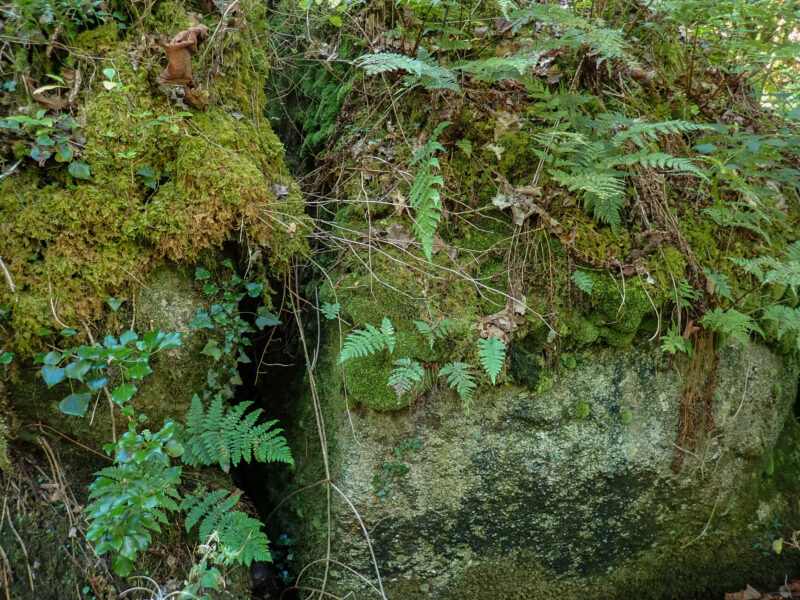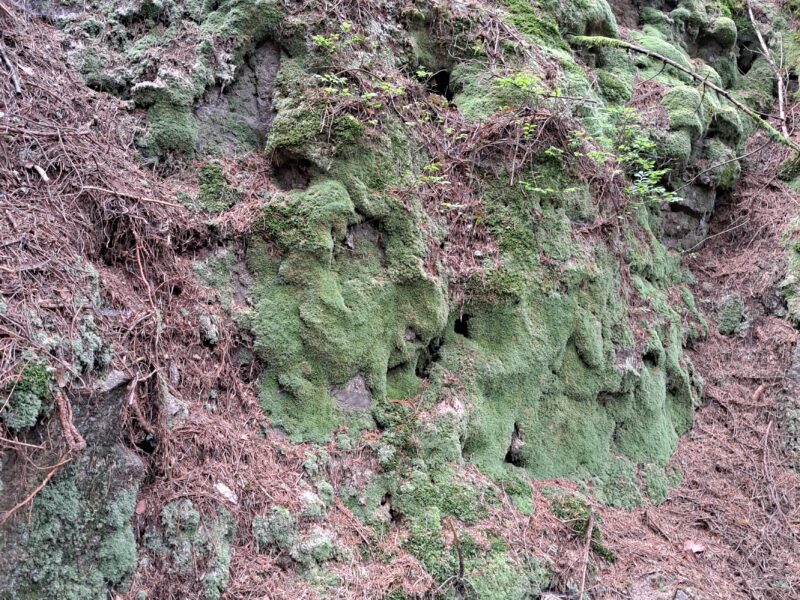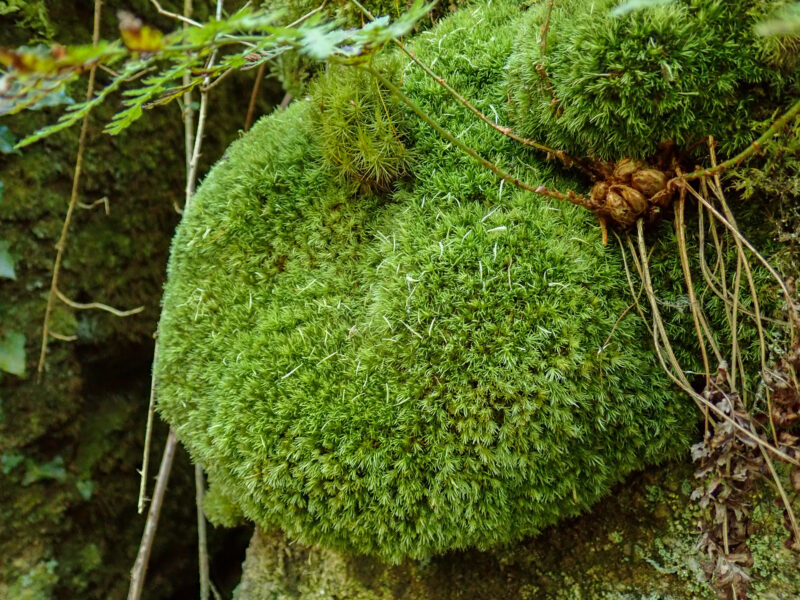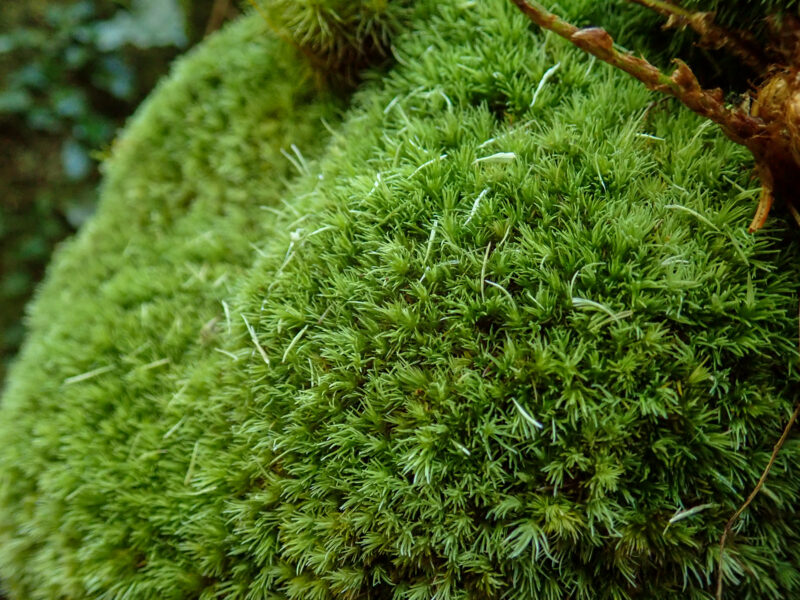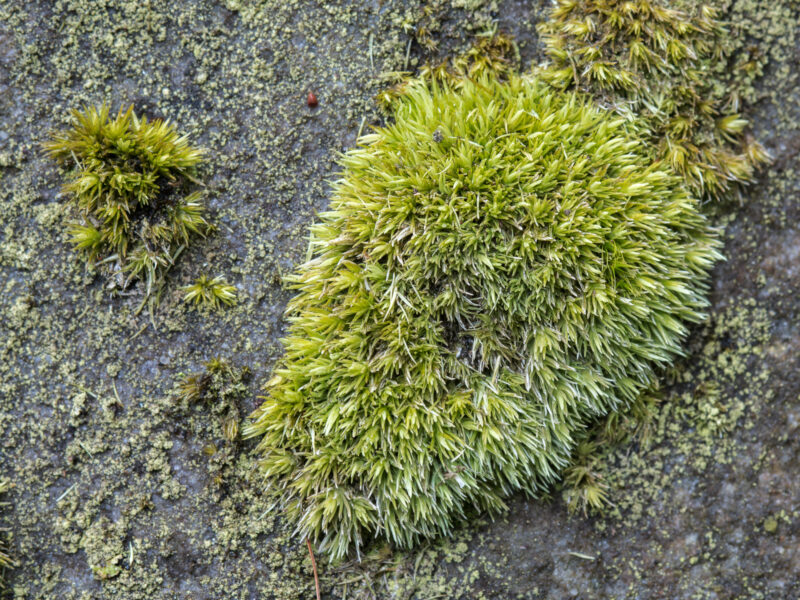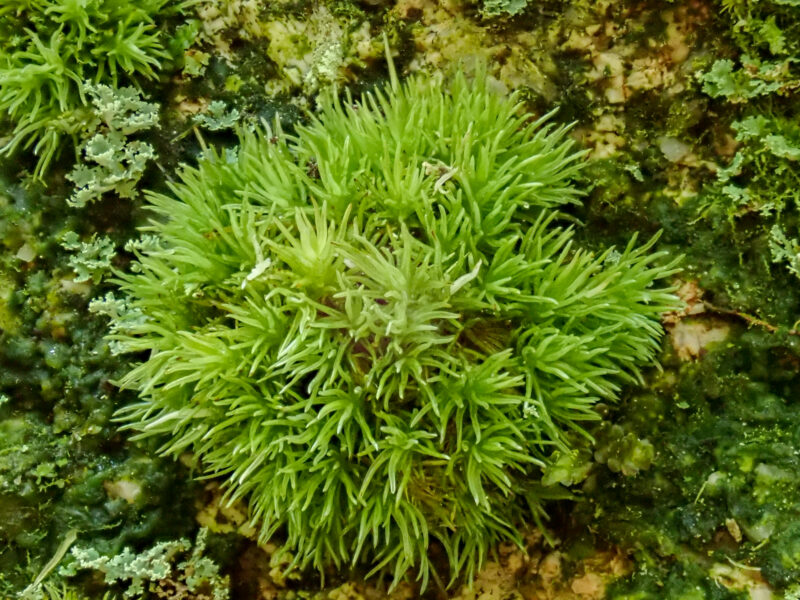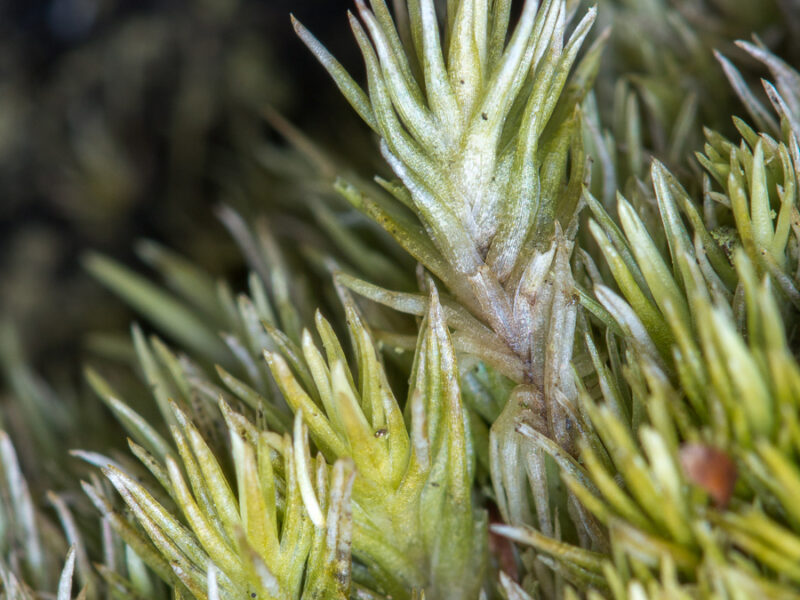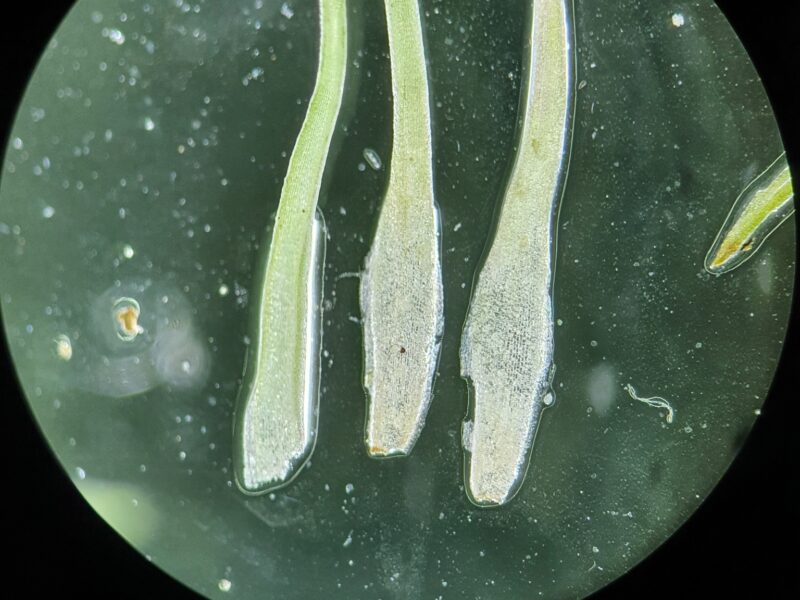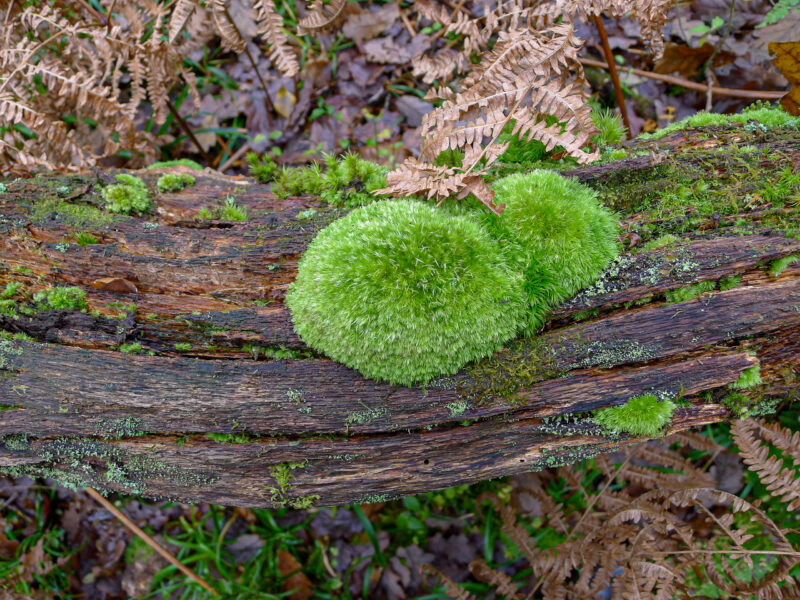Identification notes
Our understanding of the genus Leucobryum in Britain and Ireland changed dramatically with the paper by Ottley et al which demonstrated conclusively that we have three species in Britain and Ireland, and that most of what we had been calling Leucobryum juniperoideum was in fact Leucobryum albidum. This explains why we often struggled to make a definitive identification, and it also means that the treatment in Smith and most illustrations and images of this species that predate this paper can no longer be relied upon. The following notes are a guide but the paper detailed below should be consulted as well.
Leucobryum juniperoideum s.str. as we now understand it is closer to L. albidum than L. glaucum. Typical L. glaucum is a plant of open heathland, acid mires and bogs. The leaf bases are broad and usually taper gradually into a broadly triangular limb (the upper part of the leaf) that is often shorter than the base. The other two species tend to have narrower bases, less than 1.2mm, which taper more abruptly to a limb that is usually longer than the base. They are often found in more sheltered shady habitats, with L. albidum favouring the ground and tree stumps in acid woodland, and L. juniperoideum preferring humid more oceanic habitats where it will grow on wet rock, slopes and rotting wood.
Cushions of L. juniperoideum tend to be not so tightly packed as L. albidum and the leaves may be slightly wavy or secund. There is, however, significant variation within each species and confirmation of the identity of L. juniperoideum by microscopy is essential. Choose wide leaves from a little below the stem apex.
The leaf lamina in Leucobryum consists mainly of nerve but the marginal band of cells is only one cell thick and provides important taxonomic characters. This band is thicker than in the other species, being usually 10 cells wide or more, with any more than 12 being diagnostic. It has a rather weak border of elongated cells. Longitudinal sections taken near the midline of the lamina will demonstrate narrow lateral pores in the leucocysts that are usually under 6µ in width – it is best to measure the longest pores. Taking sections can be fiddly but can usually be achieved by anchoring a single hydrated but not wet leaf with fine forceps, slicing down the midline, and then taking a few parallel thin slices. Staining can be helpful but not always necessary.

